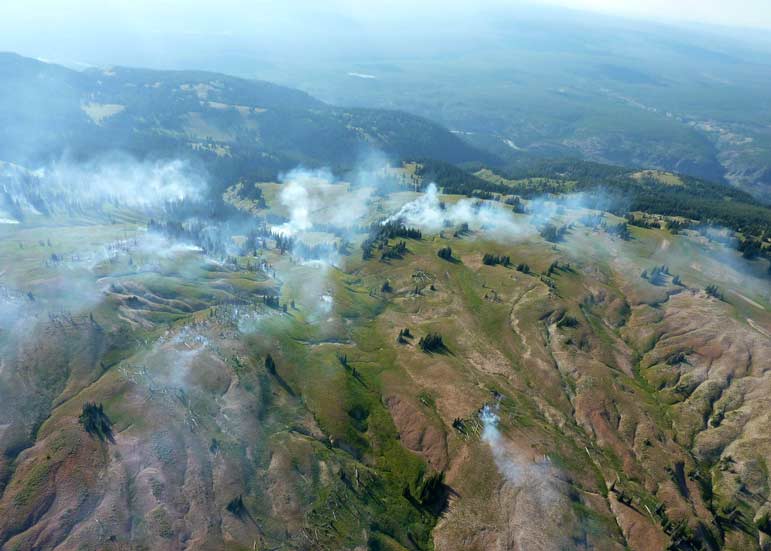
Recent rains throughout the Teton Interagency Fire area have given firefighters a much-needed respite from fire activity, and resulted in the fire danger dropping to “moderate” as of Wednesday.
The precipitation also minimized activity on several lightning-caused fires in the Teton area. Teton Interagency Fire personnel will continue to actively monitor and patrol area fires as conditions warrant, according to a statement released by the Grand Teton National Park public affairs office.
The following fires are currently exhibiting minimal fire behavior:
The 200-acre Snake Fire three miles east of the south entrance to Yellowstone National Park on the border of the Bridger-Teton National Forest, but primarily in Yellowstone.
The 180-acre Moose Fire in Grand Teton National Park on the west side of Jackson Lake in the upper basin of Moose Creek.
The 1,065-acre Green Fire in the Upper Green River on the Pinedale Ranger District.
The 698-acre Kendall Mountain Fire in the Bridger Wilderness, east of Boulder Basin.
Currently no closures are associated with these fires, but hunters and other visitors are urged to use caution if traveling near any of these uncontrolled fires or recently burned areas, and to be aware of the associated hazards such as falling snags, active flame, rolling rock and hot, smoldering stump holes.
Teton Interagency Fire area, which includes the Bridger-Teton National Forest, Grand Teton National Park, the National Elk Refuge, as well as Lincoln, Sublette, and Teton counties, have dealt with a total of 50 wildland fires so far this year. Approximately one third of those were human-caused. More than 145 campfires have been left unattended or abandoned by recreationists.
Fires can still start easily during moderate fire danger. Campfires always need to be cold to the touch before leaving them.
